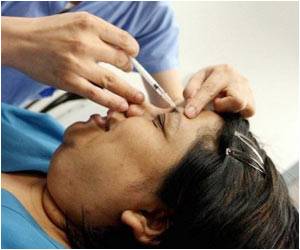Two grants totaling more than $5 million have been awarded to regenerative medicine researchers at the University of Pittsburgh received from the National Institutes of Health (NIH).
Two grants totaling more than $5 million have been awarded to regenerative medicine researchers at the University of Pittsburgh received from the National Institutes of Health (NIH). The aim is to explore new methods for cultivating replacement cells from existing tissues and organs.
A $2.9 million, five-year Transformative R01 (T-R01) grant presented to Eric Lagasse, a professor of pathology in Pitt's School of Medicine and a researcher in Pitt and UPMC's jointly operated McGowan Institute for Regenerative Medicine, will support the development of a novel concept: using the body's many lymph nodes as sites for growing replacement cells for other tissues and organs, in essence using them as bioreactors to grow cells within the living body. Ipsita Banerjee, a professor of chemical and petroleum engineering in Pitt's Swanson School of Engineering and a McGowan faculty member, received a $2.2 million, five-year New Innovator award to unravel how embryonic stem cells develop into mature cells and possible techniques for influencing their growth to suit specific organs.The grants were presented as part of the 2009 NIH Director's High-Risk Research Awards, a cluster of five-year grants presented to researchers exploring ideas with the potential to advance their fields and medical treatment. On Sept. 24, the NIH announced 115 awards totaling $348 million, including 42 T-R01 Awards, 18 Pioneer Awards, and 55 New Innovator Awards for early-stage investigators. This marks the inaugural year for the T-R01 grants—which support innovative and high-risk projects that could profoundly impact biomedical research and medical treatment—and also is a record year for the number of New Innovator and Pioneer Awards bestowed. Fellow New Innovator and T-R01 recipients include researchers from the Cleveland Clinic, Columbia University, Duke University, Harvard University, Johns Hopkins University School of Medicine, Massachusetts General Hospital, the Massachusetts Institute of Technology, Mount Sinai School of Medicine, Stanford University, and the University of Pennsylvania.
Lagasse's work focuses on lymph nodes, which are important in responses to bacterial and viral infection and are found throughout the body. Even spread out, the total mass of the nodes makes them a feasible place to grow liver cells, for example, which must also be available in abundance and with ample blood flow to provide life-sustaining hepatic function, Lagasse said. His team will explore growing liver and other tissues in such "ectopic" sites, meaning outside of where it would normally reside. The same principle of using lymph nodes as a site for ectopic cell factories might work for replacing pancreas cells that make insulin for patients with diabetes or immune system T-cells for patients who have AIDS and other diseases of immunologic-impairment.
"Our regenerative medicine approach for healing damaged tissues and organs might not have moved forward without this new grant concept," Lagasse noted. "This funding supports assessment and rapid translation from the bench to the bedside of nontraditional treatments."
Banerjee will investigate the process through which embryonic stem cells become mature, organ-specific cells and how scientists can control that development. Using a bottom-up approach, Banerjee will cultivate stem cells into pancreatic cells, noting molecular-level information that could be integrated into dictating cell development, such as the influence of environmental factors and gene and protein networks.
"I want to take a completely different approach to addressing the complex process of cell development, which will potentially advance our understanding of regenerative medicine and stem cell bioengineering as a whole," Banerjee said.
Advertisement
The following year, Barry London, a Pitt professor of medicine, was presented with a Pioneer Award to develop new techniques to image electrical activity of the heart and identify those at risk of sudden cardiac death.
Advertisement
Source-Eurekalert
RAS










